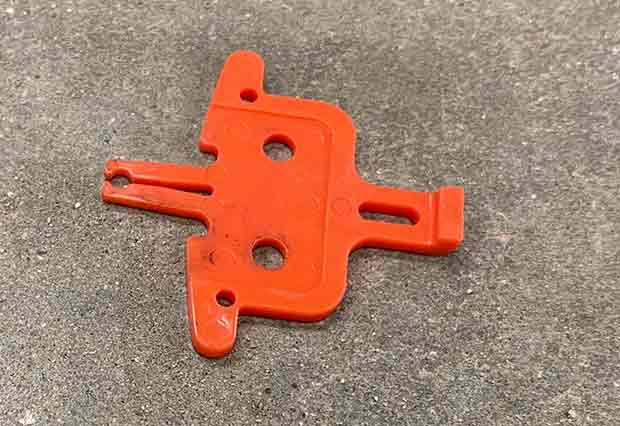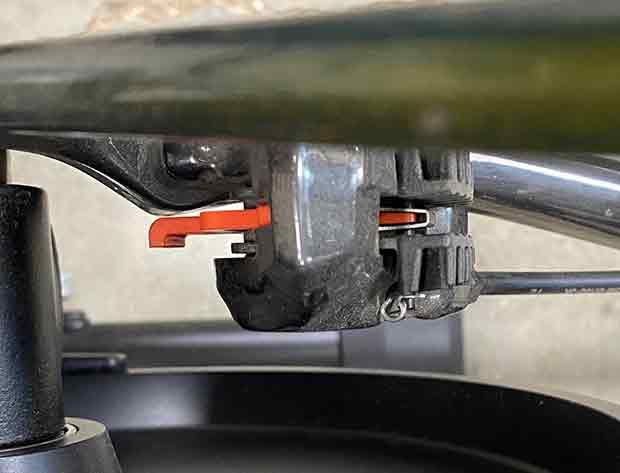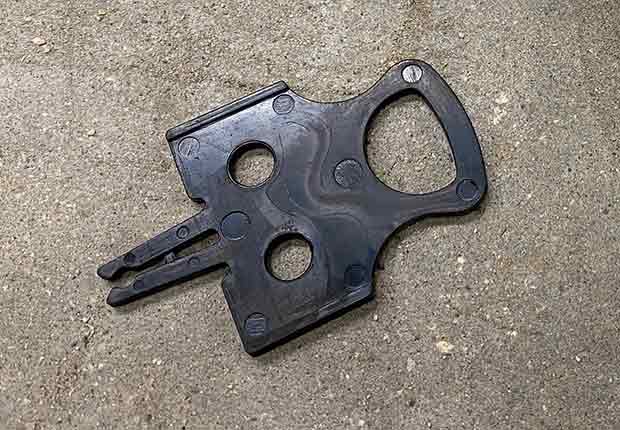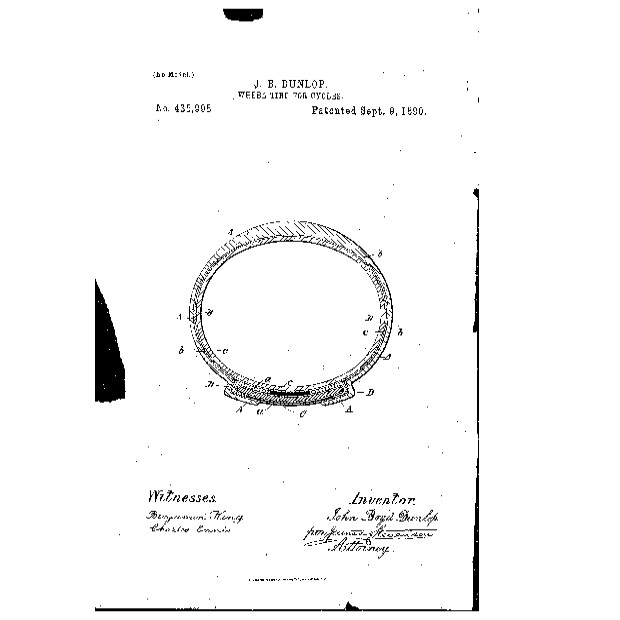What Is This Little DoWhacker?

As in childbirth, all are ushered into the cold light of a new reality with hydraulic disc brakes on bicycles. It does not matter whether you’re eager to break out or prefer to stay put. Ready or not, welcome to your new life.
When you got your new bike you might’ve gotten a little baggie with plastic pieces and among them might be a half-inch thick block of plastic and that’s not what we’re going to talk about now. That thicker piece is what you use to put in your brake calipers when you bleed your brakes. (You take your brake pads out, and you put that “bleed block” in during the bleed process.) You may never need this for your own use, as you are unlikely to ever bleed your own hydraulic brakes (but you could, if you wanted, and it’s a pretty helpful skill.)
In this case, it’s these thinner pieces I’m writing about and they are meaningful and necessary even if you do zero mechanical work on your bike. What is this piece called? Good question. The name of the product if you buy it online from Walmart is “Bicycle Oil Disc Piston Stopper Oil Brake Caliper Plastic Protective Film Clamp,” and you get 10 of them for 6.99. They’re just fifty cents each on AliExpress where the same product is called a Hydraulic Disc Brake Piston Retainer. But it’s more commonly a pad spreader.

So pad spreader it is. But note that the metal tools made to spread the brake pads are also called pad spreaders. I don’t know how many one person needs but here you can buy 24 of then for ten bucks. Why do you need this?
Any time you take your wheel out – front or rear – and transport your bike or do anything with it where the wheel remains out, you put one of these in (per brake caliper). Hydraulic disc brakes do not like to be activated, or invoked (no pressing the brake lever) when the wheel is not in the bike. If you find that your brakes are all of a sudden rubbing, did you take your wheel out and put it back in? Perhaps when it was out the brake lever was depressed. If so, there’s a good chance the pistons did not retract.
I’m writing this to you now because it’s winter and there’s a particular use case for these: stationary training. If you have a bike with hydraulic disc brakes that you put on a smart trainer, you have to take the wheel out. In the case of the set up I’m riding now, both wheels are out (Wahoo KICKR and Wahoo KICKR Climb). I’ve got pad spreaders in both brake calipers.

The other time I need these is when I travel. I don’t have a roof rack but if I did that would be a case. More likely it’s when I take a bike on a plane and then I for sure install pad spreaders. You’ll note the small slotted hole in your pad spreaders. Your brake pads are fixed into your brake assembly with a “pad pin” and you remove this to take your pads out, for either replacement or for brake bleeding. That slotted hole in your plastic pad spreader clips onto this pad pin. If you don’t hear and feel a click when you insert the pad spreader it’s not in there right.
And that’s it! Don’t throw these away, or wonder what they are. Keep these around. Probably best to just put them on your bike, wherever it is you store tubes or inflators or tools.





Start the discussion at slowtwitch.northend.network